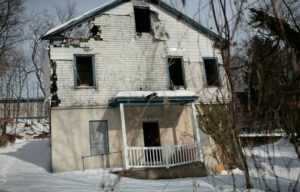 Despite current economic conditions of high interest rates, high home prices, low inventory, and inflation, there is still a lot of promising news in the real estate world, but prospective buyers remain wary of purchasing a home due to these conditions.
Despite current economic conditions of high interest rates, high home prices, low inventory, and inflation, there is still a lot of promising news in the real estate world, but prospective buyers remain wary of purchasing a home due to these conditions.
But one fact that is not often discussed is the number of vacant homes—to the tune of some 16 million single-family units, or 9% of total housing—which if put on the market could lower home prices overall, increase inventory, and alleviate some of the glut of homeseekers who cannot find or afford a home in their desired location.
It should be noted that just because a home is “vacant” doesn’t mean it is ready for tenants. A portion of those 16 million vacant homes are second homes or vacation homes, and others are move-in ready, many are straight-up uninhabitable.
To figure why so many homes are vacant, and the location of these homes, Today’s Homeowner journalist Kristina Zagame and Data Content Manager Stephanie Horan have authored a new report defining what is considered a vacant home and what can be done to get these homes on the market.
According to Today’s Homeowner, the top 10 cities with the highest vacancy rates and in the South and Midwest, with Scottsdale, Arizona, Miami Beach, Florida, and Pompano Beach, Florida at the top of the list. One-third (32.8%) of vacant homes are for seasonal or recreational use.

According to the U.S. Census Bureau, the definition of a vacant home is intentionally broad; but for the purposes of this survey a vacant home was defined as a home that has not had anyone live in it for six months, is a vacation home, a vacant rental home, a home that is being rehabilitated for sale, a home that was sold but does not have anyone living there, or a home that houses temporary migrant workers. In addition vacant homes include REO’s, foreclosed homes, homes being used solely for storage, or are in such poor condition they are considered abandoned.
Why does Asheville have such a high vacancy rate? Nearly 16% of the city’s vacant homes are for sale. That makes Asheville the city with the highest percentage of vacant homes waiting to be sold. The next highest city—Harlingen, Texas—trails far behind with 2.5% of vacant homes for sale.
“[Asheville’s] local economy is undergoing a period of slump,” said Troy Shaffer, Founder of Blu Corporate Housing, a national short-term housing rental company. “This has caused a decrease in the residing population, and individuals are moving toward more prosperous states. The supply remains the same, whereas the demand falls, leading to an increase in the vacancy rate.”
“Market conditions are not positive for buyers or sellers. Asheville has faced a 23% spike in home prices,” said Jasen Edwards, Real Estate Agent and Chair of the Agent Advice Editorial Board. “Buyers are waiting for the prices to drop before making such an investment.”

So, are vacation homes keeping others from homeownership? Available data suggests that the number of vacation homes are driving up median home prices in cities where resident incomes cannot keep pace with rising home prices.
The study found, in short, affluent out-of-towners buying vacation homes may prevent locals from acquiring their first homes.
Click here to read the study in its entirety.









